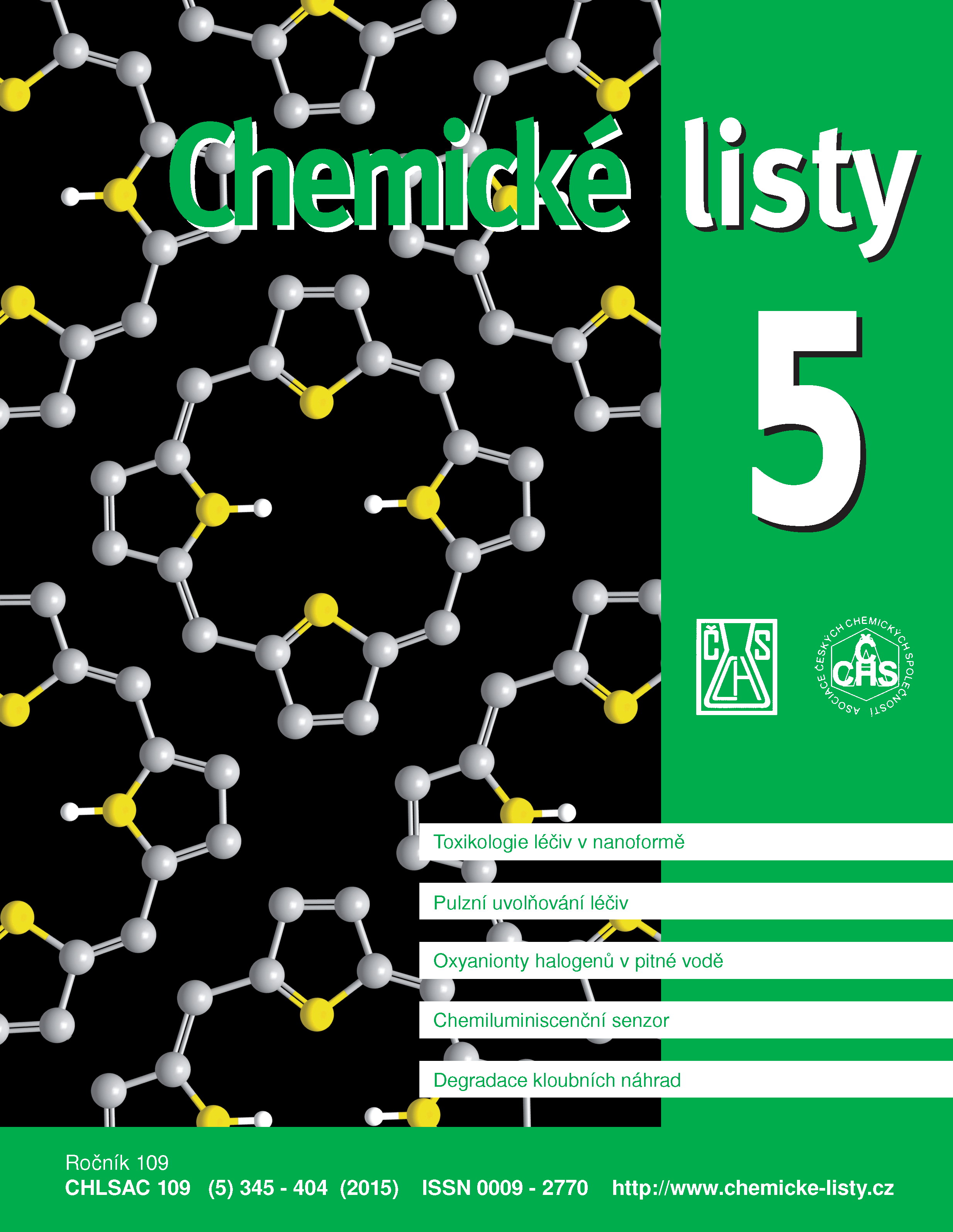The Development of Optical Sensor with Chemically Modified Electroluminescence Diodes
Keywords:
electroluminescence diode, LED, luminescence, optical sensor, polycarbonate, chemical derivatization, chemisorptionAbstract
Light-emitting diodes (LED) have become an important light source increasingly utilized in analytical instrumentation. The aim of this study is to extend their use as chemically sensitive transducers in optical sensing. Chemical reactions occurring on the surface of standard polycarbonate LED cases containing carboxy and amino groups were studied. The chemically modified polymer surface proved to be suitable for binding some laser dyes by chemisorption. LEDs with bonded Sulforhodamine 101 or Cresyl Violet dyes were utilized in the construction of a luminescence chemical sensor suitable for the determination of toluene in air in the range 0.0–26.3 mg ml–1.





